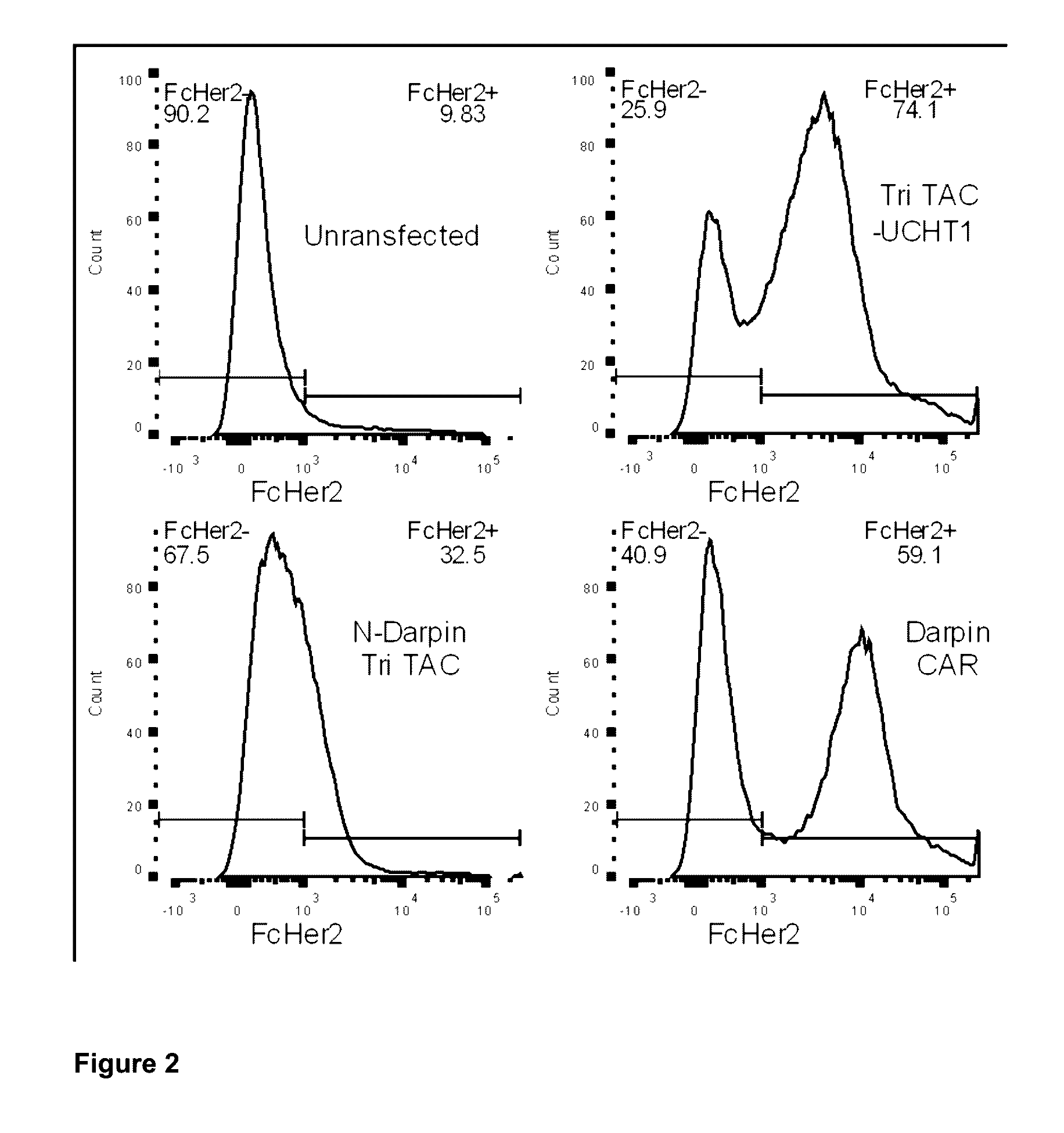Trifunctional t cell-antigen coupler and methods and uses thereof
a t cell and coupler technology, applied in the field of cancer treatment, can solve the problems of reduced cellular control of specific activity, not showing off-target effects, and limited conventional cars, and achieve the effect of improving activity and safety
- Summary
- Abstract
- Description
- Claims
- Application Information
AI Technical Summary
Benefits of technology
Problems solved by technology
Method used
Image
Examples
example 1
Background and Summary
[0146]A trifunctional T cell-antigen coupler (Tri-TAC) was developed to better recapitulate the natural signaling through the TCR, while retaining MHC unrestricted targeting. T-cell activation occurs following ligation of MHC by the TCR and co-receptor on the T cells (either CD4 or CD8) simultaneously bind to conserved regions within the MHC molecule (Yin et al., 2012) (Kuhns and Davis, 2012). The co-receptors are specifically located within “lipid rafts” (Fragoso et al., 2003) (Arcaro et al., 2000), membrane micro domains that are particularly important for TCR signal complex formation (He and Marguet, 2008). In addition to ensuring the correct microdomain localization of the TCR activation complex, these co-receptors also bind directly to Lck (Kim et al., 2003), a protein kinase that is crucial for T-cell activation (Methi et al., 2005) (Acuto and Cantrell, 2000). As stated previously, none of the existing chimeric receptors or bi-functional proteins engage t...
example 2
Characterization of the Tri-TAC Technology
[0161]An overview of the Tri-TAC technology is provided in FIG. 5.
[0162]FIG. 5A shows an example of CD8 T-cell activation based on the co-assembly of different receptors and their associated protein partners. Initially, the major histocompatibility complex I is presenting an antigen (helix). This is recognized by a T cell receptor (TCR) complex capable of binding the antigen. The TCR complex contains several individual subunits. The □□□ domains are able to interact directly with the antigen presented on MHC-I. The □□□ domains then interact with several other domains (□□□□□□□□ and □□□, all of which participate in T-cell activation via various intracellular activation domains. The TCR complex interacts with MHC-I concurrently with the CD8 co-receptor. The CD8 co-receptor binds to the MHC-I in an antigen independent manner. CD8 directly interacts with Lck, a protein kinase important for activating the TCR receptor complex. The CD8 and Lck inter...
PUM
| Property | Measurement | Unit |
|---|---|---|
| temperature | aaaaa | aaaaa |
| nucleic acid | aaaaa | aaaaa |
| surface expression analysis | aaaaa | aaaaa |
Abstract
Description
Claims
Application Information
 Login to View More
Login to View More - R&D
- Intellectual Property
- Life Sciences
- Materials
- Tech Scout
- Unparalleled Data Quality
- Higher Quality Content
- 60% Fewer Hallucinations
Browse by: Latest US Patents, China's latest patents, Technical Efficacy Thesaurus, Application Domain, Technology Topic, Popular Technical Reports.
© 2025 PatSnap. All rights reserved.Legal|Privacy policy|Modern Slavery Act Transparency Statement|Sitemap|About US| Contact US: help@patsnap.com



